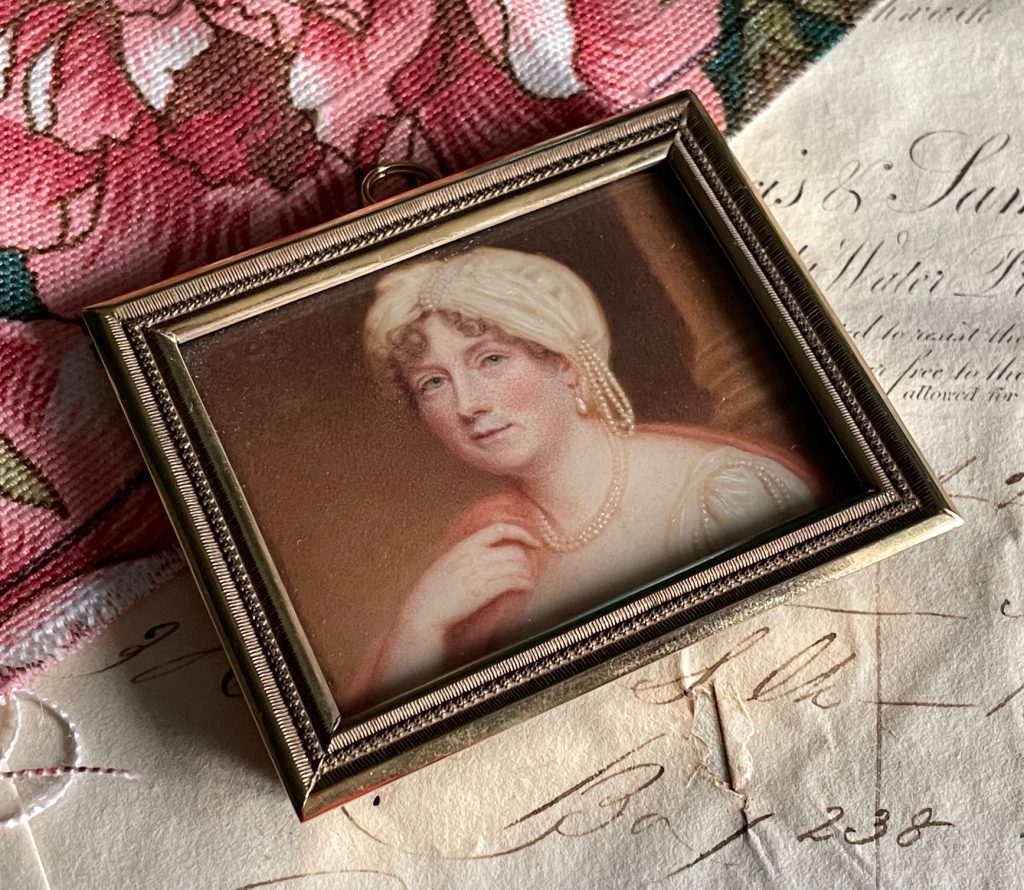
Portrait miniatures, silhouettes, portraits & an omnium-gatherum of historical interest & character.
Enquiries and orders
Lady Arabella Diana
Duchess of Dorset
Sold
Standing before a classical column, Lady Diana gazes out pensively as she lightly strokes her pearl necklace. With a cloak over her shoulders, she wears a fashionable turban liberally trimmed with ropes of pearls to match her pearl drop earrings.
Born in 1768, Arabella Diana was the daughter of Sir Charles Cope 2nd Baronet and Catherine Annabella Bishopp. Her father died when she was just thirteen; his vast estates were inherited by Diana and her sister making them both wealthy young heiresses. Her mother subsequently married Charles Jenkinson 1st Earl of Liverpool. Their descendants have hitherto been the caretakers of this portrait.
Aged 22, Arabella Diana married 48-year-old John Frederick Sackville, 3rd Duke of Dorset. The family home was Knole House in Sevenoaks: now managed by the National Trust, John Frederick’s important art collection is still on display there. Prior to their marriage, John had had a long-running affair with a dancer whose full-length plaster likeness had to be discreetly consigned to the attics upon his marriage. Diana and John had a son and two daughters. She was the great great grandmother of Vita Sackville-West, the well-known writer and garden designer.
Their youngest daughter was only four years old when Diana was widowed. Having mourned her husband for two years, she then married his friend Charles Whitworth, 1st Earl of Whitworth, a diplomat and politician. A contemporary described her at this time as “a capable woman … with a taste for power and pleasure”. The couple continued to live at Knole, dying there within four months of each other in 1825. As befitted her station in life, Diana was buried in style with a funeral cortege of 22 horsemen. Her only son pre-deceased her so her vast estates passed to her two sons-in-law, the Earls of Plymouth and De la Warr.
The current collections at Knole House include two portraits of Diana, one by John Hoppner painted in full-length in the 1790s, the other by Vigée Le Brun painted in 1803 as well as a marble bust commissioned in 1818.
This unusually shaped miniature portrait resided originally within a traditional papier-mâché frame but, as it was in terrible condition, it now resides within a custom-made brass frame that uses the original decorative surround.
Item Ref. 7251
Size: framed, 64 x 78mm
Provenance: From the collection of the Earl of Liverpool